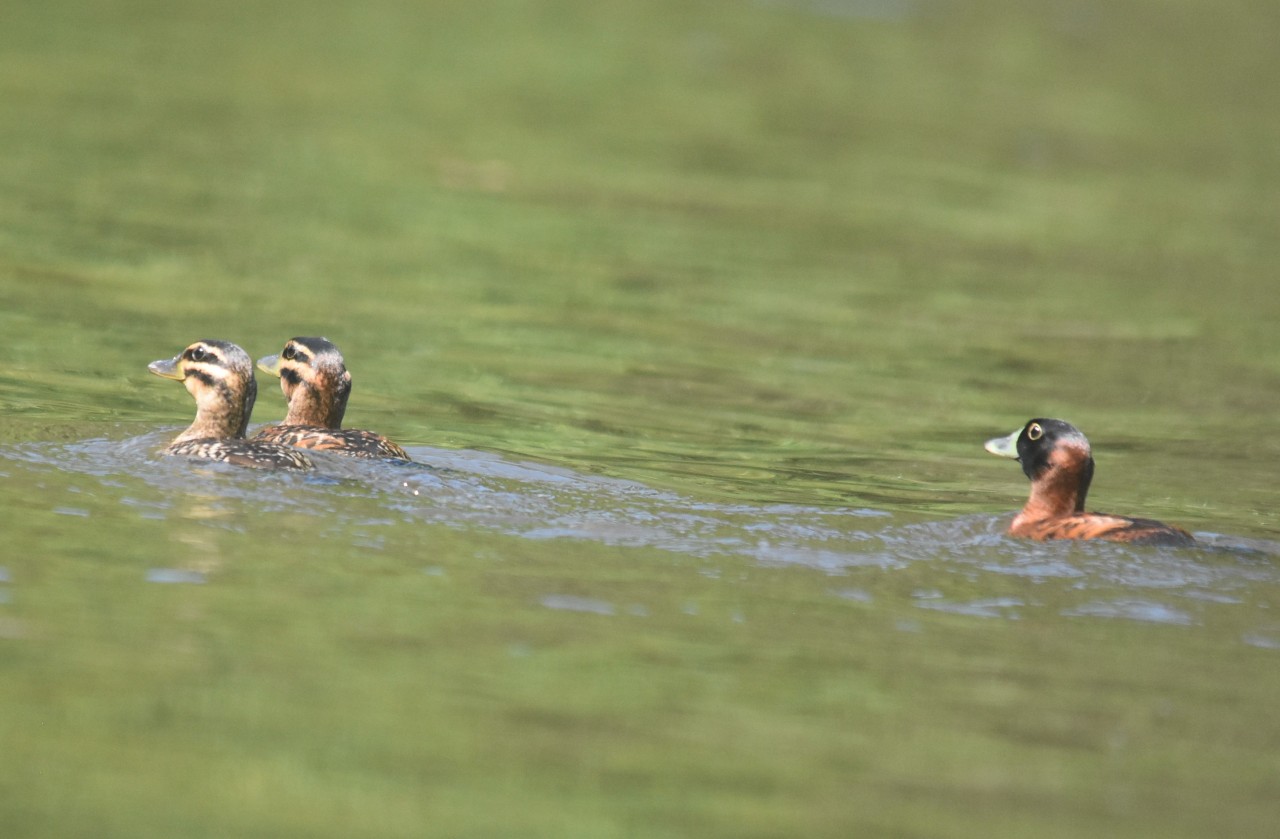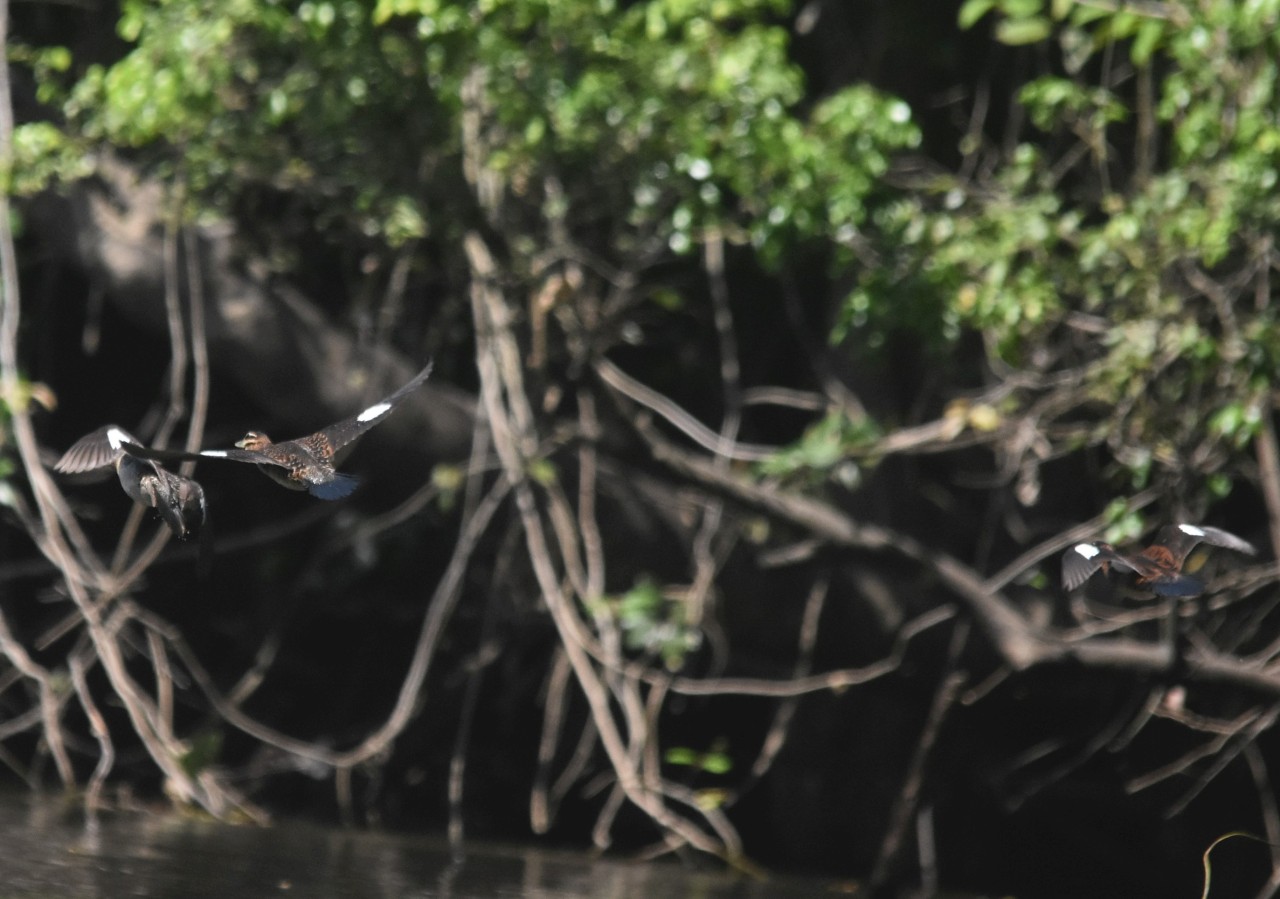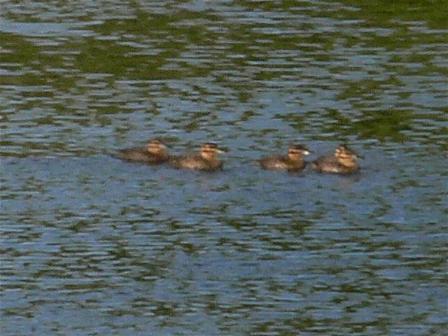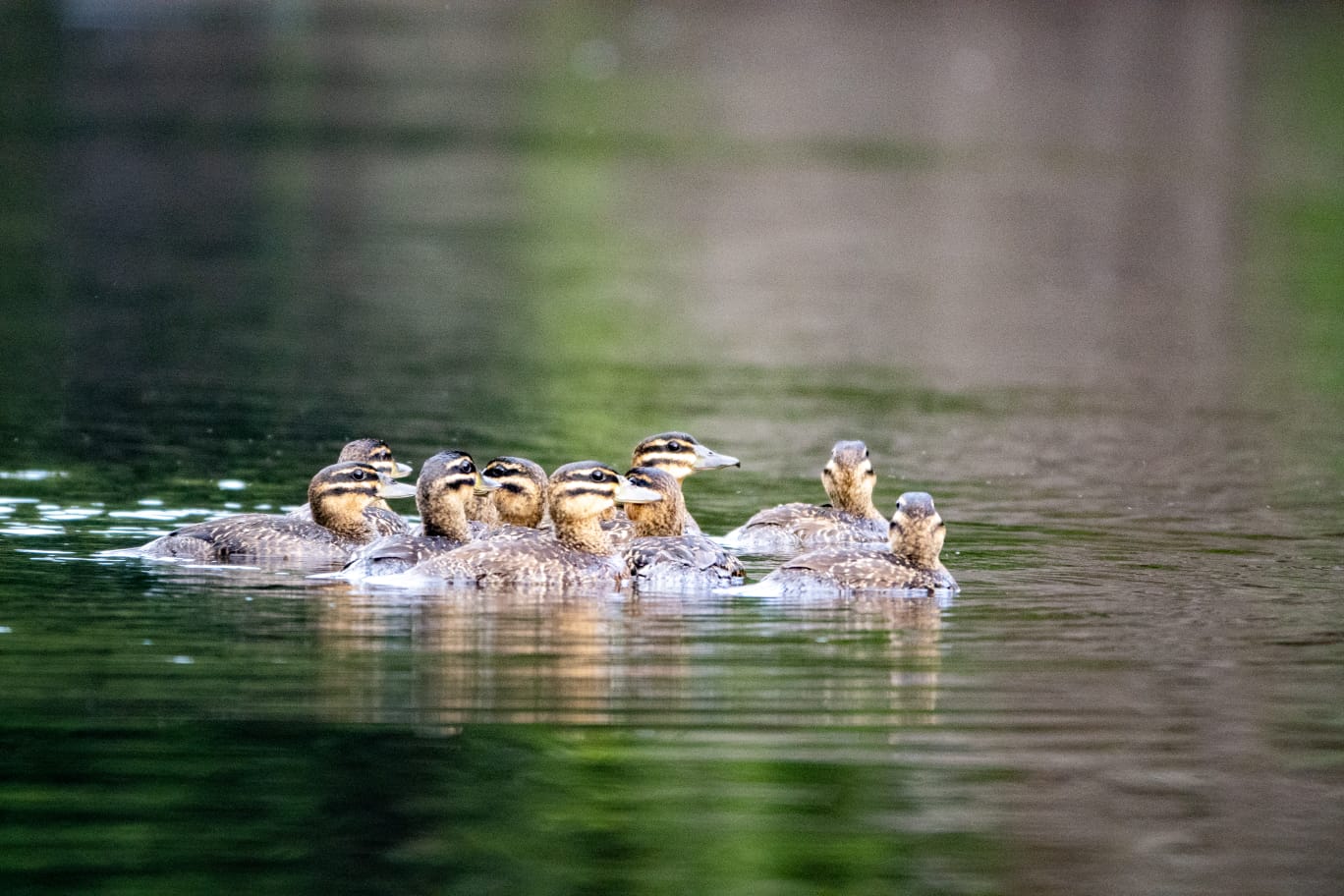 Masked Duck (Nomonyx dominicus)
Masked Duck (Nomonyx dominicus)
 Masked Duck (Nomonyx dominicus)
Masked Duck (Nomonyx dominicus) |
 |
| Pictures (click on them to enlarge) | ||
|---|---|---|
 September 2022 Kabalebo © Armida Madngisa nature guide |  same three © Armida Madngisa nature guide |  September © David Ascanio |
 September © Dick Lock |
| Picture of a group of Masked ducks near Fungu Island in the Ralleigh Falls nature reserve, made by David Ascanio in September 2006. Groups of up to 14 masked ducks have been reported at forested rivers not near the sea (Wayombo, Maratakka, Tempati and Coppename) in the months August to October, in the other months the observations are from marshes near to the sea. They breed from Texas to Chile in marshes, also in Suriname as Renssen saw a pair with ducklings at Marienburg. The males have a blue bill and a black head, females and young males have their head with two stripes as in the photo. Dick Lock made the video of a group of Masked Duckson the upper Nickerie river in 2022. In September in the forest as with some photos above. |
| Video (click the link or the 'play'-button to see) | ||
|---|---|---|
| Video recording of a Masked Duck © ; |
|
|
||||||||||||||||||||||||||||||||||||||||||||
| Observations through the year | Observations of breeding through the year |
|---|---|
| The 26 reported observations of this bird in Suriname, mainly for the last 50 years up to 2018, have been grouped by month. More birds on one day are counted as one observation. Of course, if the graph should depict the total number of birds seen, the differences between the months could be much more pronounced. | The 1 reported breeding observations of this bird in Suriname. Most observations are about nest with eggs, some about fledglings, or feeding at a nest or the building of a nest. Of the about 5000 nests and eggs found for all species together, about 1/3 comes from the egg collection of Penard between 1896 and 1905. For some reason most collecting then was done in the first half of each year, so the shown distribution does not necessarily reflect the actual breeding preferences. The main dry season in Suriname is reckoned to be from half August to the end of November, the main wet season from half April to half August, but the the timing of begin and end does vary from year to year. Around March a second dry season often occurs. |